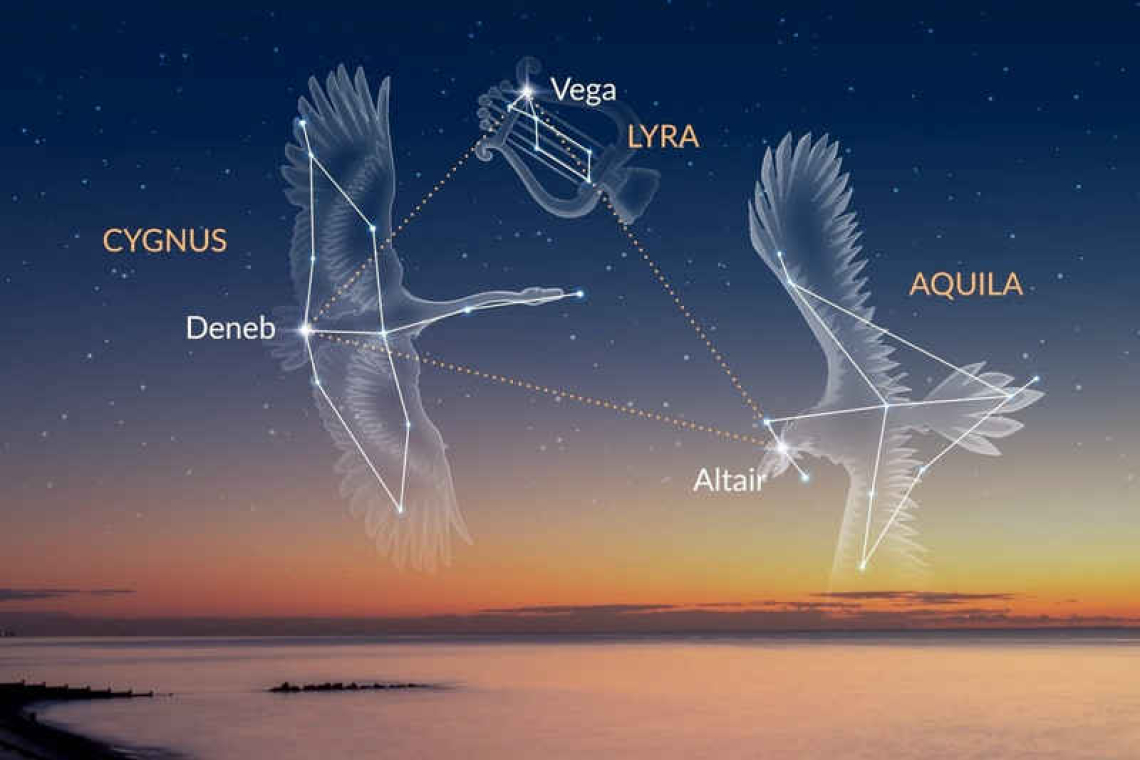~ St. Maarten’s Backyard Astronomy for April 26-28 ~
Sun rises at 5:47am
Sun sets at 6:32pm
Lunar phase: 3rd quarter waning gibbous
Moon sets at 7:26 am
Moon rises at 9:09 pm
This weekend, look North to see the Dippers, both Big and Little! They will be on full display along with their entourage. What entourage, you ask? Well, there is a lynx, a giraffe, a dragon, a hero and a herdsman.
The Dippers are well known from our childhood lessons, but a quick review will be offered here. The Big Dipper is seen in the image included, but it will be seen after sunset in its upside-down position, directly above the Little Dipper, which is also upside-down. Both these will rotate to a sideways position as the night wears on. Recall that the Latin name of these two constellations, Ursa Major and Ursa Minor, reflects that the ancient cultures saw this star shape not as a pair of dipping spoons, but as a big bear and a little one.
The Little Dipper is highly significant because the last star in its “handle” is Polaris, the North Star. This is the only star that doesn’t move as the hours pass by. All the other stars, and even the sun the moon and the planets appear to us on earth to circle around Polaris. Also Polaris’ height in the sky is the same as the observer’s latitude on the planet – very useful to navigators!
Wrapped around the Little Dipper is Draco, the dragon. His tail reaches just between the two dippers and then he curves around the ladle end and his head points up to the right, towards Hercules, the hero. Hercules is recognized as a large square, representing his torso, and his arms and legs are reaching out, one hand holds a sword or bow.
Looking left, or westward from the Big Dipper is one of the least well-known constellations, Camelopardalis, which is Latin for giraffe. He sets early, though, so look early in the evening hours. Above Camelopardalis, look for a straight up and down slightly zig-zap line of stars, this is the Lynx.
Above Hercules, and to the right, or east, of the Big Dipper, you should be able to locate the constellation Boötes, the Herdsman. It’s a large constellation, somewhat kite-shaped with a brilliant star at its pointed tip – Arcturus.
Around midnight, as the Big Dipper follows the giraffe to the horizon, you can see two great birds rising from the northeastern horizon: Cygnus the Swan and Aquila the Eagle. By this time, the gibbous moon will likely outshine all but the brightest stars, making constellation identification a bit tricky. As the week progresses, the moon will slim down and star-gazing should be perfect by the first weekend in May.
Thank you for keeping up with the Night Sky articles, backyard astronomy designed for St. Maarten sky viewing. FYI: If you are out later on in the week, note that each star rises about four minutes earlier each day than written here, and the moon rises 50 minutes later. Night Sky is researched and compiled by Lisa Davis-Burnett. Earthsky.org is a key resource for information and images. Questions or comments? Email This email address is being protected from spambots. You need JavaScript enabled to view it.







